“Spring is nature’s way of saying, ‘Let’s party!’” —Robin Williams
Robin Williams was right: Spring is like a party. It’s a time of regrowth, rebirth, and renewal. It’s a time when many species that have been dormant throughout the icy winter months get to emerge and start the circle of life all over again. It sounds romantic, but among those emerging species are fleas—parasites that want nothing more than to enjoy a blood meal from your furry family members.
But fleas are more than just a nuisance. They transmit diseases that can affect humans and animals, including tapeworms, cat scratch disease, mycoplasma haemofelis, and murine typhus.
To prevent fleas from invading your home and putting your family and your pets at risk, it’s important to understand their life cycle.
The flea life cycle
There are four stages in the life cycle of a flea: egg, larva, pupa, and adult. The life cycle can take anywhere from two weeks to several months, depending on the temperature and humidity levels in the environment. Optimal conditions for fleas are 70-85 degrees and about 70 percent humidity.
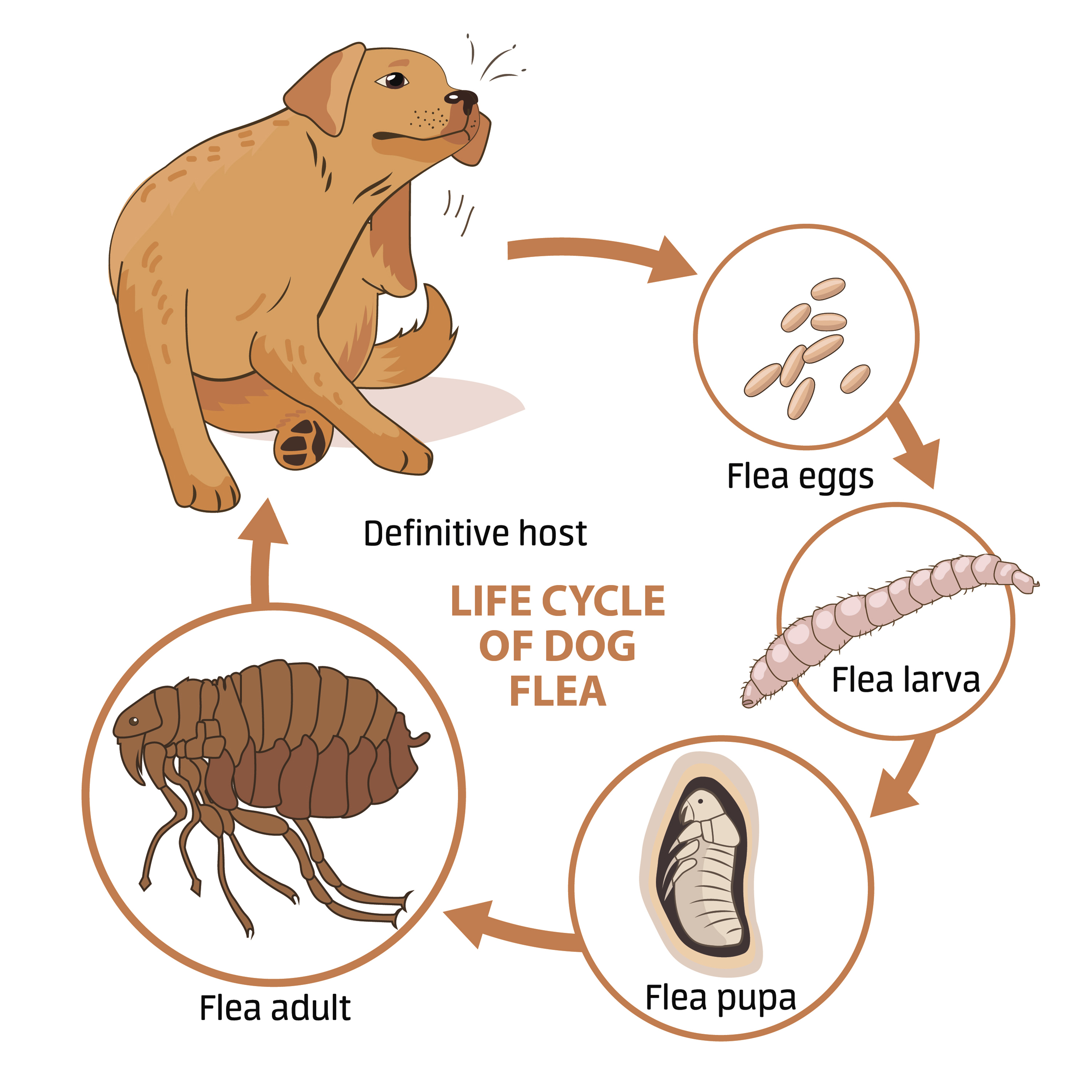
Egg
Blood is necessary for an adult flea to reproduce. After feeding, an adult female flea lays eggs in a pet’s fur. The eggs are white and smaller than a grain of sand and will fall off the pet as he moves, being disbursed throughout the environment. Flea eggs take about 2 days to 2 weeks to develop, depending on temperature and humidity. Eggs represent about half of the total flea population in an environment at any given time.
Larva
Flea larvae are blind and do not like being in the light. Over several weeks, they develop while eating “flea dirt,” which is pre-digested blood that adult fleas pass. Flea larvae are white (nearly transparent), about a quarter of an inch long, and have no legs. In ideal conditions, larvae will spin cocoons about 5-20 days after hatching. Larvae make up about 35 percent of the total flea population in an environment.
Pupa
The flea’s cocoon can protect a developing flea before it emerges as an adult for several days, weeks, months, or even years if conditions aren’t ideal for emergence. The cocoons are resilient, with a sticky outer coating that protects the flea from chemicals and helps them to stay concealed and safe within carpeting. Once a host is present and the flea pupae can sense the presence through body heat, vibrations, or rising levels of carbon dioxide, the adult flea will emerge from the cocoon to feed. Flea pupae make up about 10 percent of the flea population in an environment.
Adult
An adult flea will need to feed within a few hours from emerging from its cocoon, and it will begin reproducing within a few days after that. Living up to several months on the host animal, an adult flea spends its time feeding, breeding, and laying eggs. Adult fleas make up only 5 percent of the flea population in an environment.
A few flea facts
- A single flea can lay up to 50 eggs daily and 2,000 eggs in its lifetime. That means that as few as two female fleas can produce more than 2,000 baby fleas, and, within a few months, hundreds of thousands of fleas can result.
- The average flea can jump at least one foot, which is equivalent to a person jumping about half a block.
- Of the more than 2,200 known flea species and subspecies in North America, the cat flea, or Ctenecphalides felis, is the most common flea to bite dogs. Cat fleas will also bite cats and people.
- Garlic is NOT an effective flea preventive. While it seems there are some varieties of garlic that, when rubbed all over a pet, might deter some fleas, it is not a recommended way to keep fleas at bay. (Why would you want to rub garlic all over your pet anyway?)
- To effectively control fleas, a flea prevention product must eliminate more than 90 percent of fleas in the environment, otherwise the flea reproduction exceeds the ability to control.
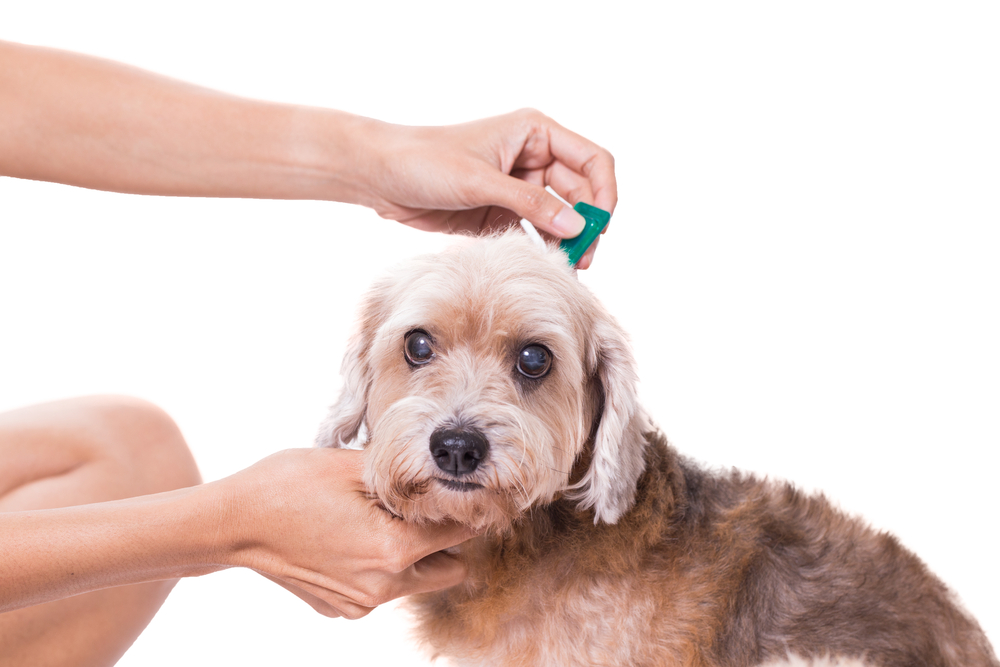
Preventing fleas
Just because fleas aren’t active when weather conditions aren’t ideal, doesn’t mean they aren’t there. As mentioned, a flea can remain in the pupa stage for months before it emerges as an adult when temperature and humidity levels are right and a host is present. That’s why it’s advantageous to use a flea preventive year-round that kills fleas in all stages of life.
Just like you wouldn’t want to rub garlic all over your pet to control fleas, you also wouldn’t want to trust your pet’s health with someone who isn’t a veterinarian. Rather than visiting your nearest big-box pet supply store for over-the-counter flea products, talk with your veterinarian about which flea preventive would be best for your pet. And remember, flea products meant for dogs can be highly toxic to cats, so never use a canine flea medication on your cat.
Springtime doesn’t have to mean party time for fleas in your home. Call our office at 937-866-5949 if you have questions about protecting your pets (and your home!) from fleas.



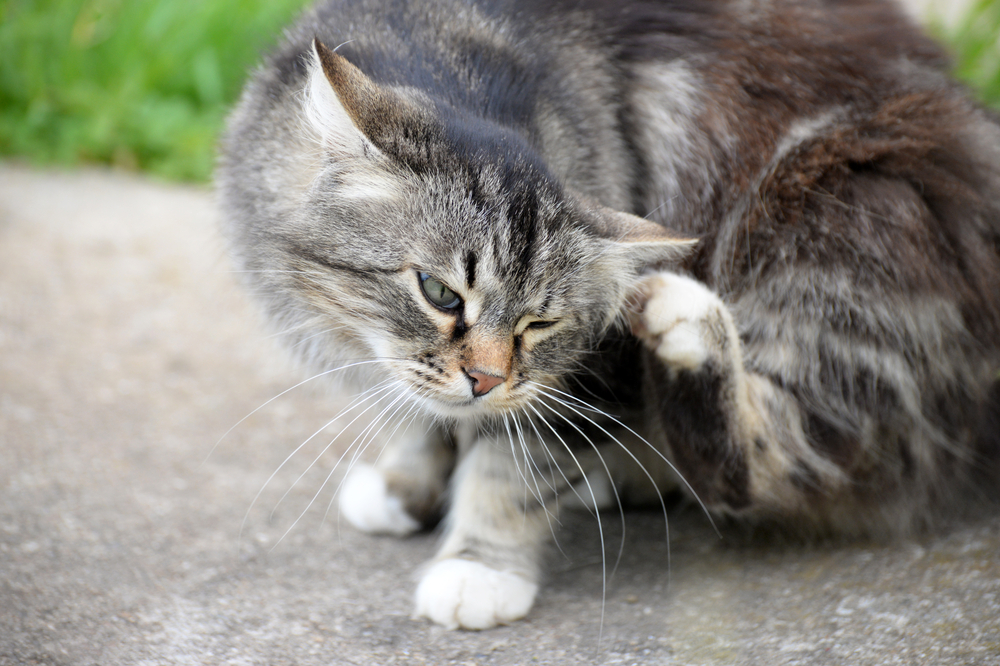
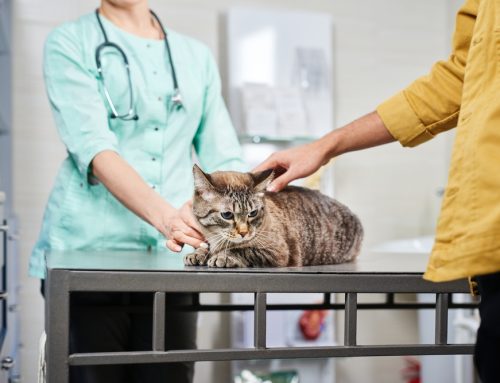


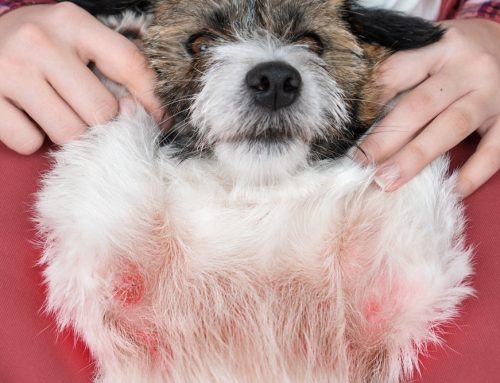

Leave A Comment